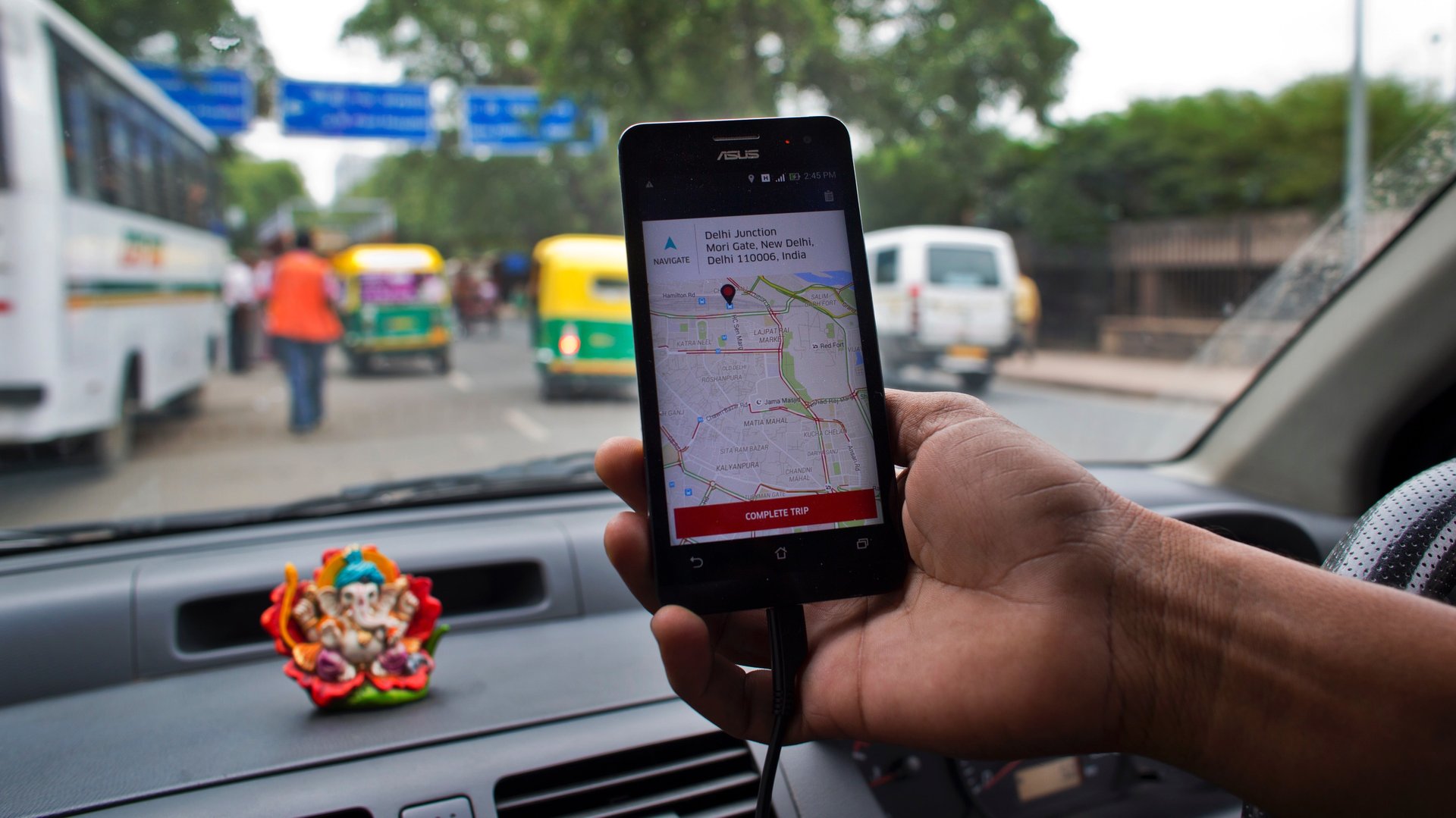When Uber invests in an Indian startup, who really wins?
Ride-hailing rivals Uber and Ola are taking the road less travelled to overcome a talent shortage.


Ride-hailing rivals Uber and Ola are taking the road less travelled to overcome a talent shortage.
Even though India’s startup scene is teeming with entrepreneurs, angel investors, and venture capitalists, companies are strapped for talent. By backing budding startups, Uber and Ola are tapping talent from beyond the usual substandard churn.
The relationship is symbiotic: Indian startups often struggle to raise funds and garner recognition. So they benefit from the financial support, brand association, and expert guidance the industry’s big names offer.
In 2015, the San Francisco-based Uber brought to India its initiative called UberPitch, a global hunt for startup talent where entrepreneurs share their business ideas with investors during a 15-minute cab ride. Instead of spending thousands of dollars on hiring and firing hit-or-miss talent, Uber is out to “steal all the ideas” from the country’s vibrant startup landscape through events like UberPitch. During its second instalment this year, it awarded $50,000 (Rs34 lakhs) each to three local companies and invited them to Uber’s California office to get guidance from its top executives, a company release said on Jan. 09.
Local rival Ola organises hackathons to identify students and professionals whom they may eventually hire. The Bengaluru-based company declined to say if it invests in local startups or not, but CEO Bhavish Aggarwal has backed diverse projects in his personal capacity, ranging from on-demand tutoring to electric motorcycles to board games.
Talent hunt
A $50,000-backing may be too tiny to make a real impact on any startup, but Uber’s experiment is actually “an extended form of recruitment,” technology analyst Bob O’Donell said. Even if most of these startups don’t gain traction, Uber has gained valuable exposure to 5,000 companies during UberPitch’s application process.
After all, finding good talent can be quite a challenge in India.
In 2011, Nasscom, the trade association of IT and business processing units, estimated that over three-quarters of India’s IT engineers are not job-ready at the time of graduation—a statistic reaffirmed by Aspiring Mind’s 2014 survey.
To overcome the dearth of employable engineers, e-retail majors Flipkart and Snapdeal imported professionals from Silicon Valley. But this strategy did not succeed much as these officials faced massive cultural headwinds.
Uber could do the same, but focusing on India helps it curry favour with the government. That’s increasingly important at a time when homegrown firms are rallying for protectionist policies.
“We started this programme in line with prime minister Modi’s vision of making India a global startup hub,” Uber told Quartz. “This public-private initiative will enable students, entrepreneurs, and industry leaders to learn from each other.” Chief executive Travis Kalanick, who joked that he would even get Indian citizenship to make it in Uber’s second-largest market after the US, is also mentoring local entrepreneurs as part of the UberExchange programme under the ”Startup India Initiative.”
Also, through UberPitch, the company is seeking a deeper understanding of the “many markets” within India, with their different languages, cultures, and customs, Vivek Wadhwa, a fellow at Carnegie Mellon, told Qurtz. “They’re able to go and plant a thousand seeds and then see which one they want to grow,” Wadhwa said.
One of UberPitch’s winning startups, on-demand ambulance aggregator Ambee, thinks Uber’s name will help draw more support. Kalanick’s $50,000-backing could serve as a stamp of approval that could also encourage “other investors [to] ride along with him, creating some kind of network effect,” Ambee founder Jaimon Jose told Quartz. UberPitch winners also get tried and tested guidance at no cost. ”We don’t need to reinvent the wheel,” Jose said. They can borrow Uber’s solutions for bridging data connectivity gaps, improving location accuracy, and installing offline mechanisms in markets with spotty service.
Success-sharing API
Uber’s hyperlocalization tactics go beyond acquiring a startup or the brains behind it. Especially in the taxi booking space, companies are on the lookout for all sorts of app integrations, which is another powerful way to find new users. Previously, Zomato’s app prompted foodies to take an Uber to their next restaurant and travel website Yatra.com allowed users to spend the eCash they earned from bookings on its site on Uber rides. Ola opened up its API for InMobi, Samsung, MakeMyTrip, and HelpChat.
“Uber wants to essentially use its API so other app developers can build their apps on top of it,” Anindya Ghose, director of New York University’s Center for Business Analytics, told Quartz. “I see it as Uber’s attempt to broaden and diversify its presence.”
This year’s three UberPitch winners—Ambee, micro-tour curator SeekSherpa, and agriculture startup LeanAgri—bear no resemblance to Uber. Yet, Uber could piggyback on LeanAgri to reach the rural masses, get on Ambee’s platform to serve users suffering from minor injuries in the absence of nearby ambulances, or collaborate with SeekSherpa to reach travellers.
And just like Uber’s API opens it up to living in different apps, the roles could be reversed. “Say, an Uber rider meets with an accident or witnesses one, we could be the platform that helps them from within the Uber app,” Jose told Quartz.
On one hand, these efforts drive innovation without the burden of fundraising. On the other, skeptics worry such “deep-pocketed” monoliths could cannibalise local competitors. “They’re willing to throw billions of dollars at owning a market and they’re willing to use ruthless tactics,” Wadhwa says. “Local companies may need protection from the sharks.”